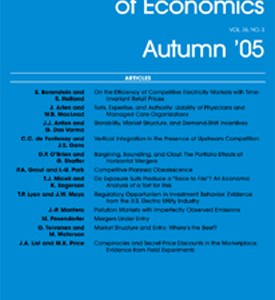
Goyal, S. and Moraga-González, \.L. (2001). R\&D networks RAND Journal of Economics, 32(4):686--707.
-
Affiliated author
-
Publication year2001
-
JournalRAND Journal of Economics
We develop a model of strategic networks that captures two distinctive features of interfirm collaboration: bilateral agreements and nonexclusive relationships. Our analysis highlights the relationship between market competition, firms' incentives to invest in R\&D, and the architecture of collaboration networks. In the absence of firm rivalry, the complete network, where each firm collaborates with all others, is uniquely stable, industry-profit maximizing, and efficient. By contrast, under strong market rivalry the complete network is stable, but intermediate levels of collaboration and asymmetric networks are more attractive from a collective viewpoint. This suggests that competing firms may have excessive incentives to form collaborative links.